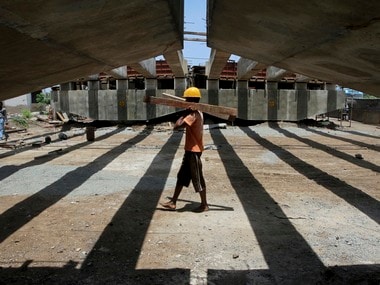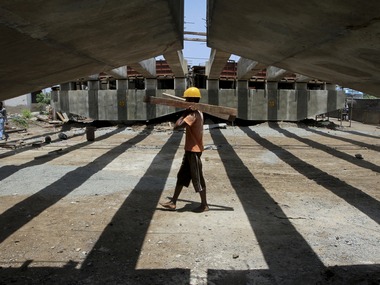The numbers first, and then a few questions. The economy grew at 7.3 percent in 2014-15. The new methodology of calculating GDP put growth at close to seven percent in 2013-2014. The base year revision gave a more than two percent push to the UPA’s dismal numbers – from 4.7 to 6.9. Now, if one accepts the current government’s 7.3 percent as true then one has to accept the previous government’s 6.9 too because methodology and numbers are neutral quantities. The average growth in the decade between 2004 and 2014 was close to eight percent – though former finance minister P Chidambaram would insist it was 8.5 percent. [caption id=“attachment_2271014” align=“alignleft” width=“380” class=" “]  Reuters image.[/caption] It could be argued that the gap between the potential of the economy and actual delivery is massive, but that’s a matter of subjective interpretation. More than 7.5 percent growth is still respectable. This is when China has decelerated from 10 percent plus in the last three decades to the sub eight territory in recent years and looks set for a prolonged low growth period, the US is still reviving at five percent and the rest of the world is performing poorly. Let’s take out the argument that China and the US are multi-trillion dollar economies and from their base a growth of five percent is much bigger than India’s eight percent; the same way you cannot compare Bihar’s growth with Gujarat’s. The consideration of base is hardly ever in the picture when economists get about the business of comparisons. What the numbers suggest is India has managed to maintain a steady growth momentum despite the blip over a couple of years due to global headwinds and policy chaos at home. The Narendra Modi government’s push to the manufacturing sector through the Make in India initiative and its emphasis on infrastructure as the vehicle of growth are likely to place the country in a trajectory where China used to be not long ago. Take the negativity – there’s too much of it around - out of the assessment of the economy, and India’s growth story promises to continue on a steady path. Now, the questions. Was the UPA the victim of a sustained campaign based on incorrect facts or to make it more direct, lies? We can be in denial but we cannot ignore the numbers. If growth is the sole reason why governments fall or continue then the available statistics don’t explain the UPA’s massive defeat fully. It is possible that while the bleak narrative of the economy dominated everything else in the run-up to the polls, the whole negative perception about the government had to do with something else, mostly matters little do with economy; or we have got our understanding of growth entirely wrong. It is something that has to be felt by people on the ground. The numbers may please rating agencies and investors but without percolation of the benefits of the growth process deep enough it guarantees no political return. Perhaps there’s a lesson for the current dispensation from the predicament of its predecessor. Numbers are a trap. With the economy looking up should the government shift gear from incrementalism to adventurism? The prime minister and Finance Minister Arun Jaitley have been facing flak from even their biggest supporters for being incrementalists in their approach rather than being bold. After all the BJP has 282 seats of its own, it should not be holding back on big bang reforms. That is why it was voted for, goes the argument. So far Modi and Jaitley have been wise to ignore them. They are busy bringing in reforms by what would many say is stealth, making changes in bits and pieces with a bigger theme in mind. The message: when quick incremental steps could be effective as well why invite the political risk? If it has worked reasonably well so far there’s no point rejecting it. Of course, it does not satisfy the advocates of adventurism. What’s the way to go, confrontation or consensus? Their cheerleaders would like the Modi-Jaitley duo to go for political confrontation to push through a radical economic agenda to pitchfork growth to a higher orbit. If it means riding roughshod over political rivals and allies, so be it. Political players by instinct the duo has struck a different route though. It has gone slow after a series of ordinances. The Land Bill is with the select committee now and the GST Bill is in the process of another round of fine-tuning. There is gradual realization that confrontation does not help, particularly when there are more areas of convergence than divergence in economic thinking among a large section of the political class. The differences in most cases are over details, not the broad idea itself. When a consensus can be worked out why push oneself into situation which is politically hostile? A good mix of sensible economics and good political common sense - that is the best way to keep the momentum going. The shift from a growth path of 7.3 percent to 10 percent would require patience and minimization of opening up conflict areas through hasty moves. The Land Bill has served the warning. The government appears to have taken note.
The new methodology of calculating GDP put growth at close to seven percent in 2013-2014. The base year revision gave a more than two percent push to the UPA’s dismal numbers – from 4.7 to 6.9.
Advertisement
End of Article


)

)
)
)
)
)
)
)
)



